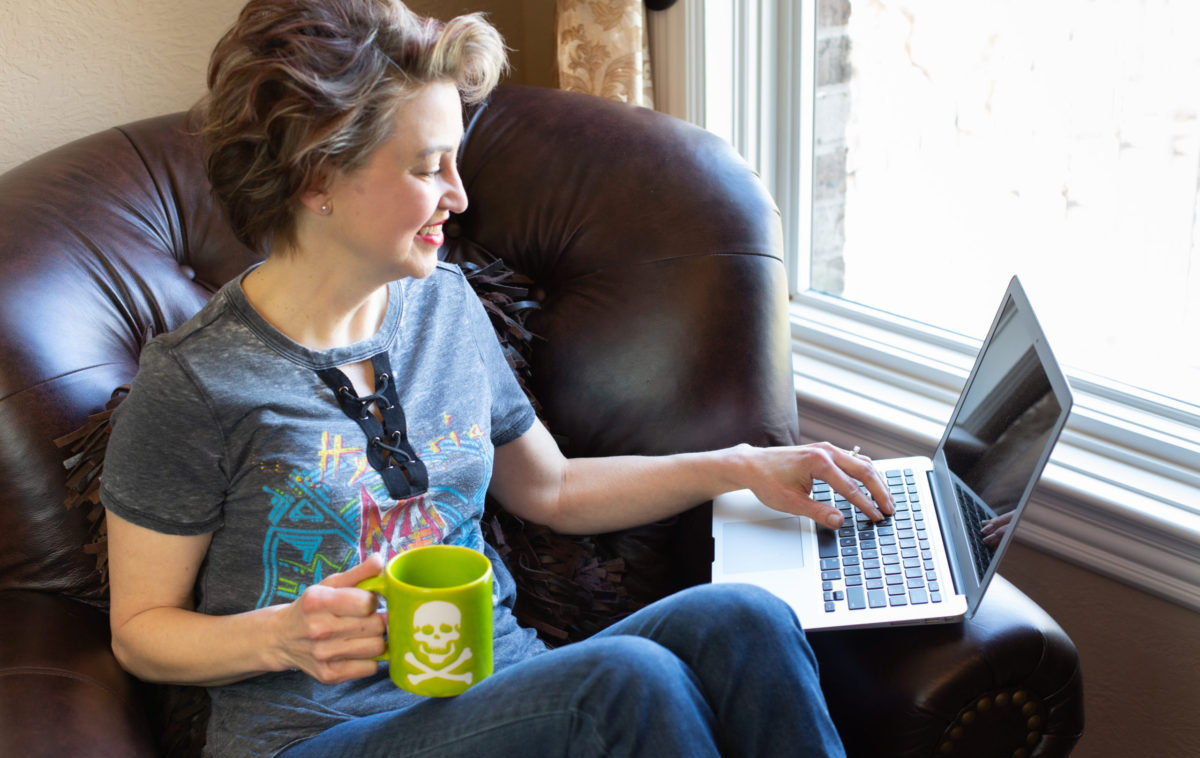
As a result of COVID-19, a major employer in my community has decided to have their 1600 employees permanently work from home. This could signal the beginning of a mass transition to permanent remote work for many of us. Obviously, there are some jobs that cannot be done from home (waiter, mail carrier, fire fighter, etc.), but if you used to be in an office under the watchful eye of your supervisor and now she’s not in your residence dictating how you spend 40 hours a week, this is a chance to vuja de your role.
Vuja de means looking at something familiar in an unfamiliar way. Before the pandemic, did you feel limited? Did you have little control over how you did your job or what tasks you had to accomplish? The upheaval of quarantine is a logical time to explore aligning your passions, abilities, and standards with your job. For example: Let’s imagine your job is recruiting college seniors for internships. One of your tasks is to discuss next steps with them and answer their questions. Pre-COVID protocol was to spend hours at the office surprising them all individually with an unscheduled phone call. This is a perfect time to book a teleconference and invite a dozen interns to attend. This saves you time, allows recruits to meet whom they’ll work with, and prompts follow-up questions relevant to the whole group; questions no one thinks to ask when put on the spot during a spontaneous phone call.
We have an unprecedented opportunity to demonstrate we can adjust our positions to better fit both our strengths and our needs and still get our work done; in fact maybe even get more work done. At the beginning of sheltering from home, most employers were skeptical full-time employees would actually work the traditional 40 hours every week. Turns out, they were right. Research indicates employees are working longer to prove we’re actually productive. With a long term crisis on our hands, we’re compelled to view our jobs as flexible because the conditions under which we perform them have to be.
During this time of returning to the office, we can ask ourselves, “What needs to get done?” “When is the best time to do it?” “Where is the best place to do it?” For example, if you’re working on a budget report, and you need to concentrate, the best time and place for you may be 11:00PM in your home office while everyone else is asleep. But if you’re brainstorming ways to automate a client’s requisition process, you may need to be in the office with your team and a wall full of whiteboards. The tasks should dictate the schedule and venue and will likely produce a hybrid model of working from both home and the office.
It would be wise to document your responsibilities since sheltering at home began. What projects have you completed? How much time did you spend? Who worked with you? How did you communicate (e.g., in person or remote)? You can use this data to produce a case study for your manager proving the benefits, both to her and the company, of allowing you the freedom to vuja de your role.
How have you adjusted your job description during the pandemic? Please share in the comments section.
